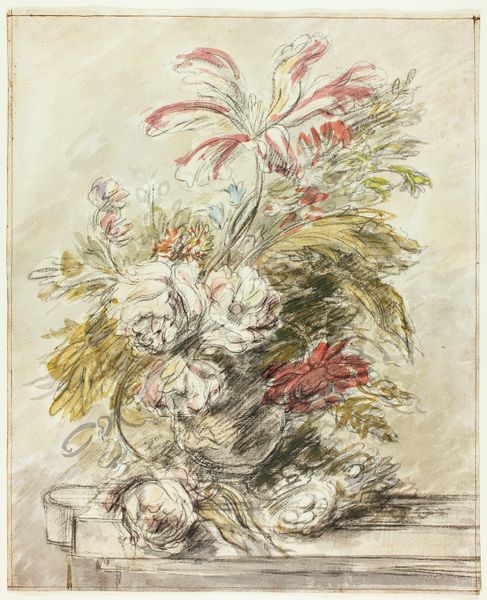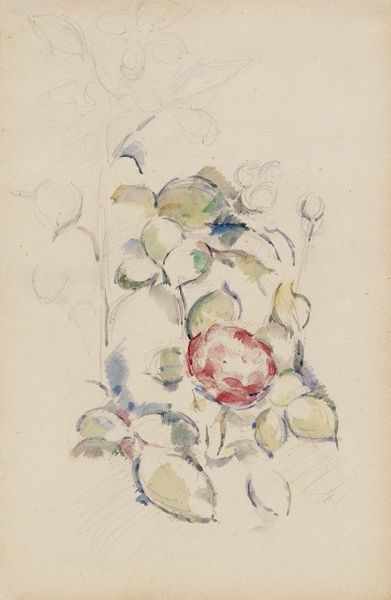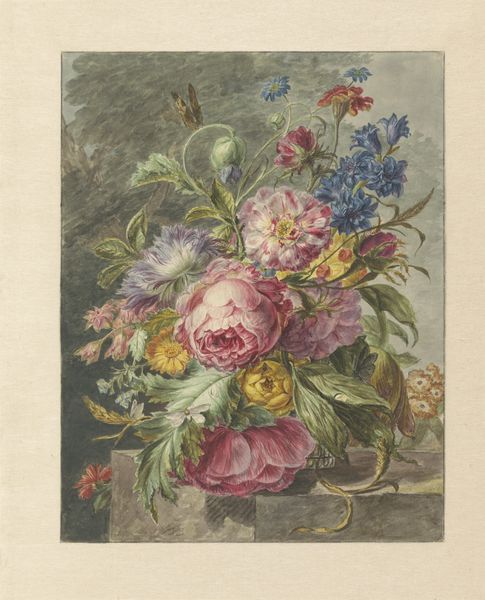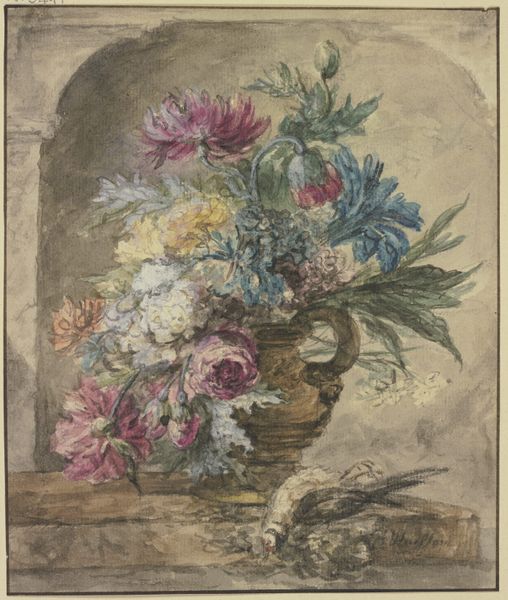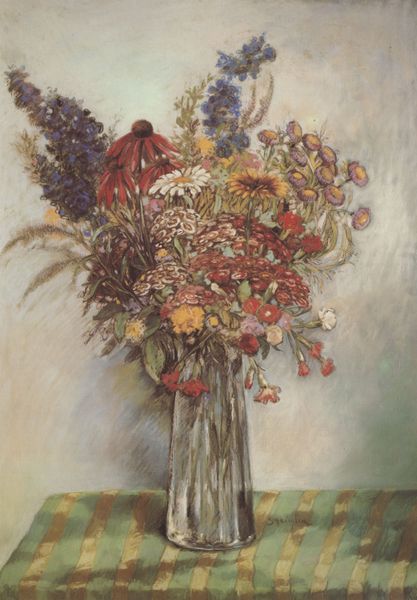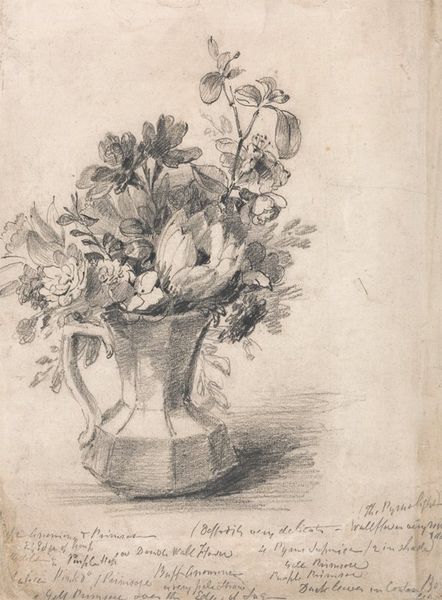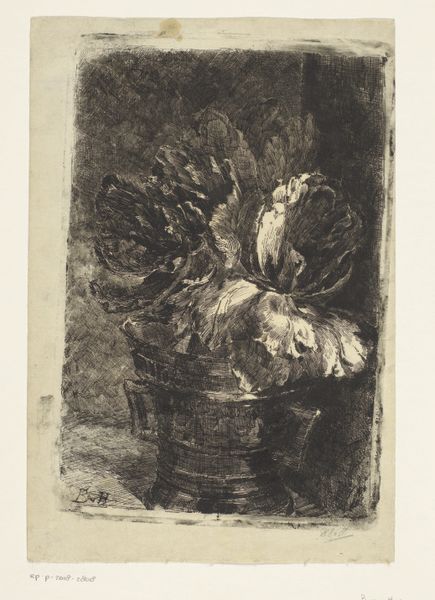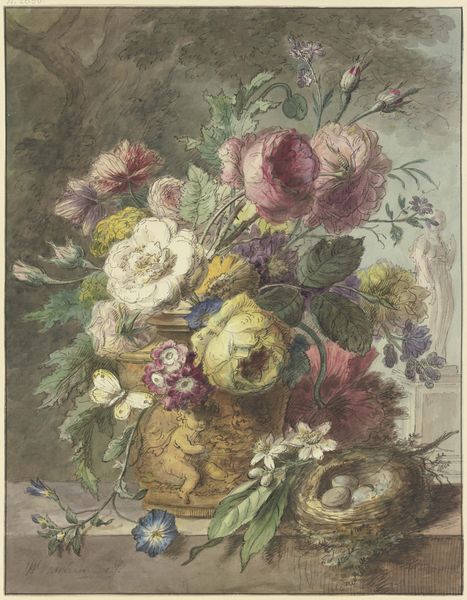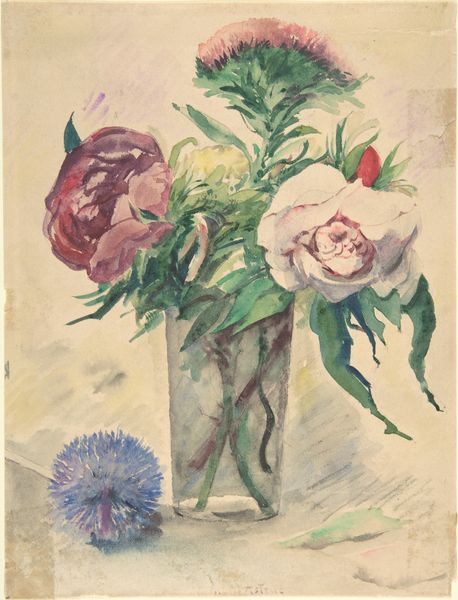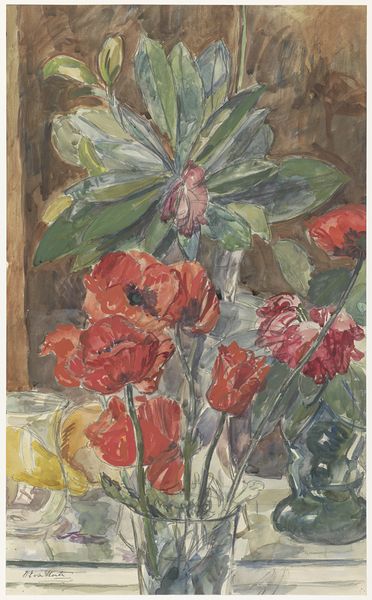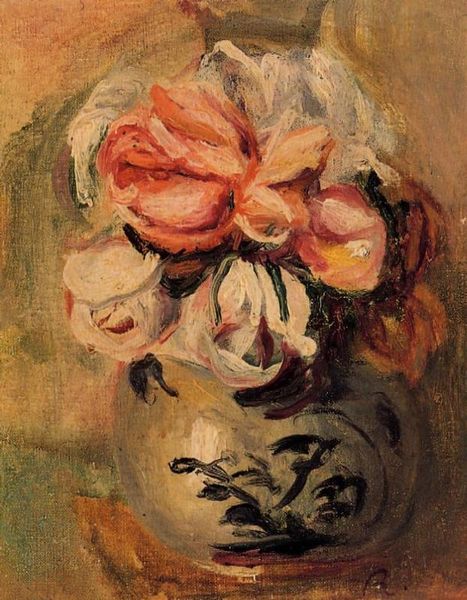
drawing, pastel, frottage
#
drawing
#
romanticism
#
pastel chalk drawing
#
symbolism
#
pastel
#
frottage
Copyright: Public domain
Curator: This ethereal pastel drawing at the Brooklyn Museum is titled "Anemones and Tulips." It’s attributed to Odilon Redon. What springs to mind when you first see it? Editor: A funeral, strangely. Or maybe not strange; these aren't exactly celebratory blossoms, are they? There's a dusky quality, a quiet resignation… It's like looking at beauty through a veil. Curator: I see what you mean. Redon was deeply invested in Symbolism, after all, concerned with inner vision, dreams. It’s created using pastel and chalk and something called frottage, layering the colors in this ghostly haze. You can almost feel the petals wilting. Editor: Right. It makes me think about societal constraints on women. Flowers have been a consistent metaphor in art history. Redon seems to hint at the suffocating Victorian standards women faced, their "bloom" idealized but simultaneously restricted, their vitality fading under the weight of expectation. Is that pushing it? Curator: Not at all. His exploration of psychological states absolutely reflects that anxiety of the era, wouldn’t you say? He captured a particular vulnerability and introspection in the way that vase almost seems to swallow the stems. They’re cut off from their roots, held captive, essentially. Editor: Precisely! Consider that even the technique - layering pastel to create such fragility—speaks volumes. It emphasizes temporality. What at first might look pretty reveals this underlying melancholy. Curator: The colors, too; that somber palette of gray, brown, black – only punctuated by reds and yellows in the flower petals. Almost a fleeting spark of rebellion. But it soon fades into shadow… almost as if those sparks will eventually be extinguished, you know? Editor: And while it may feel incredibly personal to Redon's own artistic inclinations, there's the parallel to be drawn to silenced female voices then, their self-expression also fading behind domestic roles imposed onto them. I think there is a radical interpretation that emerges in these quieter works of the time. Curator: Yes. Radically understated. It reminds me that often the most powerful statements are whispers. What appears fragile carries a resilience of its own, you know? Editor: It certainly offers a nuanced perspective on the boundaries that creativity helps us surpass – both aesthetically, politically, and, very personally, to get us beyond limitations that keep us stuck in life. Thank you for calling my attention to this pastel drawing today, especially in this light!
Comments
No comments
Be the first to comment and join the conversation on the ultimate creative platform.
